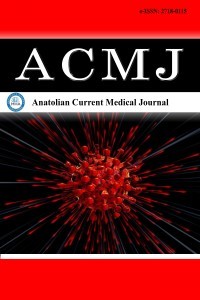1.
Kidney Disease: Improving Global Outcomes (KDIGO) diabetes work group. KDIGO 2022 clinical practice guideline for diabetes management in chronic kidney disease. Kidney Int. 2022;102(5S):S1-S127.doi:10.1016/j.kint.2022.06.008
2.
Fouque D, Kalantar-Zadeh K, Kopple J, et al. A proposed nomenclature and diagnostic criteria for protein-energy wasting in acute and chronic kidney disease. Kidney Int. 2008;73(4):391-398. doi:10.1038/sj.ki.5002585
3.
Saitoh M, Ogawa M, Kondo H, et al. Bioelectrical impedance analysis-derived phase angle as a determinant of protein-energy wasting and frailty in maintenance hemodialysis patients: a retrospective cohort study. BMC Nephrol. 2020;21(1):438. doi:10.1186/s12882-020-02102-2
4.
Çalapkorur S, İradeli EA. New method for assessing nutritional status in hemodialysis patients: phase angle. J Cumhuriyet Univ Health Sci Inst. 2023;8(1):58-64. doi:10.51754/cusbed.1136058
5.
Tur K, Güçlü A. The independent relationship between the malnutrition-inflammation score and the C-reactive protein/albumin ratio in hemodialysis patients. J Inflamm Res. 2024;17:9325-9333. doi:10.2147/jir.s477307
6.
Sohrabi Z, Kohansal A, Mirzahosseini H, et al. Comparison of nutritional status assessment methods in hemodialysis patients. Clin Nutr Res. 2021;10(3):219-229. doi:10.7762/cnr.2021.10.3.219
7.
El Alami El Hassani N, Akrichi MA, Bajit H, Alem C. Investigation of the agreement between Global leadership initiative nutrition assessment tools and bioelectrical impedance-derived phase angle regarding malnutrition criteria in hemodialysis patients. Clin Nutr ESPEN. 2024;62:260-269. doi:10.1016/j.clnesp.2024.05.027
8.
Aygül RD, Mercanligil SM, Bardak Demir S. Evaluation of the relationship between dietary energy and protein intake and anthropometric measurements in hemodialysis patients. Medicine (Baltimore). 2024;103(21):e38307. doi:10.1097/MD.0000000000038307
9.
Wang Y, Chen Y, Zhang L, et al. Phase angle as a useful predictive indicator for protein-energy wasting and cardiovascular risk in maintenance hemodialysis patients. Sci Rep. 2024;14(1):28151. doi:10. 1038/s41598-024-78957-4
10.
Faul F, Erdfelder E, Buchner A, Lang AG. Statistical power analyses using G*power 3.1: tests for correlation and regression analyses. Behav Res Methods. 2009;41(4):1149-1160. doi:10.3758/BRM.41.4.1149
11.
World Health Organization. Obesity and overweight [Internet]. Geneva: World Health Organization; [cited 2024 Dec 28]. Available from: https://www.who.int/news-room/fact-sheets/detail/obesity-and-overweight
12.
Kubo Y, Noritake K, Nakashima D, Fujii K, Yamada K. The relationship between nutritional status and phase angle as a non-invasive method to predict malnutrition by gender in elderly patients. Nagoya J Med Sci. 2021;83(1):31-40. doi:10.18999/nagjms.83.1.31
13.
Cruz-Jentoft AJ, Bahat G, Bauer J, et al. Writing group for the European working group on sarcopenia in older people 2 (EWGSOP2), and the extended group for EWGSOP2. Sarcopenia: revised European consensus on definition and diagnosis. Age Ageing. 2019;48(1):16-31. doi:10.1093/ageing/afy169
14.
Baysal A, Aksoy M, Besler T, et al. Diyet El Kitabı. 13<sup>th</sup> ed. Hatipoğlu: 2022.
15.
Cederholm T, Jensen G L, Correia MITD, et al. GLIM core leadership committee; GLIM working group. GLIM criteria for the diagnosis of malnutrition-a consensus report from the global clinical nutrition community. Clin Nutr. 2019;38(1):1-9. doi:10.1016/j.clnu.2018.08.002
16.
Elia M. The "MUST" report: nutritional screening of adults: a multidisciplinary responsibility. Development and use of the ‘malnutrition universal screening tool’ (‘MUST’) for adults [Internet]. Redditch (UK): BAPEN; 2003 [cited 2024 Dec 28]. Available from: https://www.bapen.org.uk/pdfs/must/must-report.pdf.
17.
Churchill DN. Adequacy of dialysis and nutrition in continuous peritoneal dialysis: association with clinical outcomes. J Am Soc Nephrol. 1996;17(3):198-207. doi:10.1177/089686089701703S17
18.
Eminsoy İO, Kızıltan G, Ok MA, Eminsoy MG, Oral EA, Sayın CB. Adaptation of the seven-point subjective global assessment (SGA-7P) to Turkish and evaluation of the concordance with SGA-3P in a pilot study with hemodialysis patients. Bes Diy Derg. 2019;47(3):34-45. doi:10. 33076/2020.BDD.1219
19.
Kondrup J, Rasmussen HH, Hamberg O, Stanga Z; Ad Hoc ESPEN Working Group. Nutritional risk screening (NRS 2002): a new method based on an analysis of controlled clinical trials. Clin Nutr. 2003;22(3): 321-336. doi:10.1016/s0261-5614(02)00214-5
20.
Bolayır B. Evaluation of validity and reliability of nutritional assessment test NRS-2002 (nutritional risk screening-2002) in hospitalized patients [specialization thesis]. Ankara: Hacettepe University; 2014.
21.
Li X, Zhang K, Guo Q, et al. Phase angle as an indicator of depression in maintenance hemodialysis patients. Kidney Dis. (Basel). 2024;10(6):468-478. doi:10.1159/000540683
22.
Da Silva Duarte R, Pinho CPS, Barboza YAC, Da Silva CMCS, De Carvalho TR, Lemos MCC. Association of the phase angle with nutritional status assessment parameters in hemodialysis patients. Rev Chil Nut. 2019;46(2):99-106. doi:10.4067/s0717-75182019000200099
23.
Zeng Y, Chen Y, Yang Y, Qiu Y, Fu P, Yuan H. Bioelectrical impedance analysis-derived phase angle predicts possible sarcopenia in patients on maintenance hemodialysis: a retrospective study. BMC Nephrol. 2024; 25(1):357. doi:10.1186/s12882-024-03787-5
24.
Franco-Oliva A, Ávila-Nava A, Rodríguez-Aguilar EA, et al. Association between phase angle and the nutritional status in pediatric populations: a systematic review. Front Nutr. 2023;10:1142545. doi:10.3389/fnut.2023. 1142545
25.
Bae E, Lee TW, Bae W, et al. Impact of phase angle and sarcopenia estimated by bioimpedance analysis on clinical prognosis in patients undergoing hemodialysis: A retrospective study. Medicine (Baltimore). 2022;101(25):e29375. doi:10.1097/md.0000000000029375
26.
Xu Y, Ling S, Liu Z, Luo D, Qi A, Zeng Y. The ability of phase angle and body composition to predict risk of death in maintenance hemodialysis patients. Int Urol Nephrol. 2024;56(2):731-737. doi:10.1007/s11255-023-03708-9
27.
Lee S, Daud ZAM, Lim J, et al. Bioelectrical impedance analysis-derived phase angle as a pragmatic screening tool for assessing sarcopenia in multi-ethnic peritoneal dialysis patients. Clin Nutr Open Sci. 2024;57:26-38. doi:10.1016/j.nutos.2024.07.007
28.
Martins PC, Alves Junior CAS, Silva AM, Silva DAS. Phase angle and body composition: a scoping review. Clin Nutr ESPEN. 2023;56:237-250. doi:10.1016/j.clnesp.2023.05.015
29.
Kang SH, Do JY. Phase angle as a risk factor for mortality in patients undergoing peritoneal dialysis. Nutrients. 2023;15(23):4991. doi:10.3390/nu15234991
30.
Saavedra Vásquez MA, Castañón Alonso J, Pintor de la Maza B, et al. Phase angle: differences between disease-related malnutrition, obesity and healthy people. Endocrinol Diabetes Nutr. 2024;71(10):421-426. doi: 10.1016/j.endien.2024.07.003
31.
Lim CK, Lim JH, Ibrahim I, et al. Bioelectrical impedance analysis derived-phase angle as a pragmatic tool to detect protein energy wasting among multi-ethnic hemodialysis patients. Diagnostics (Basel). 2021; 11(10):1745. doi:10.3390/diagnostics11101745

